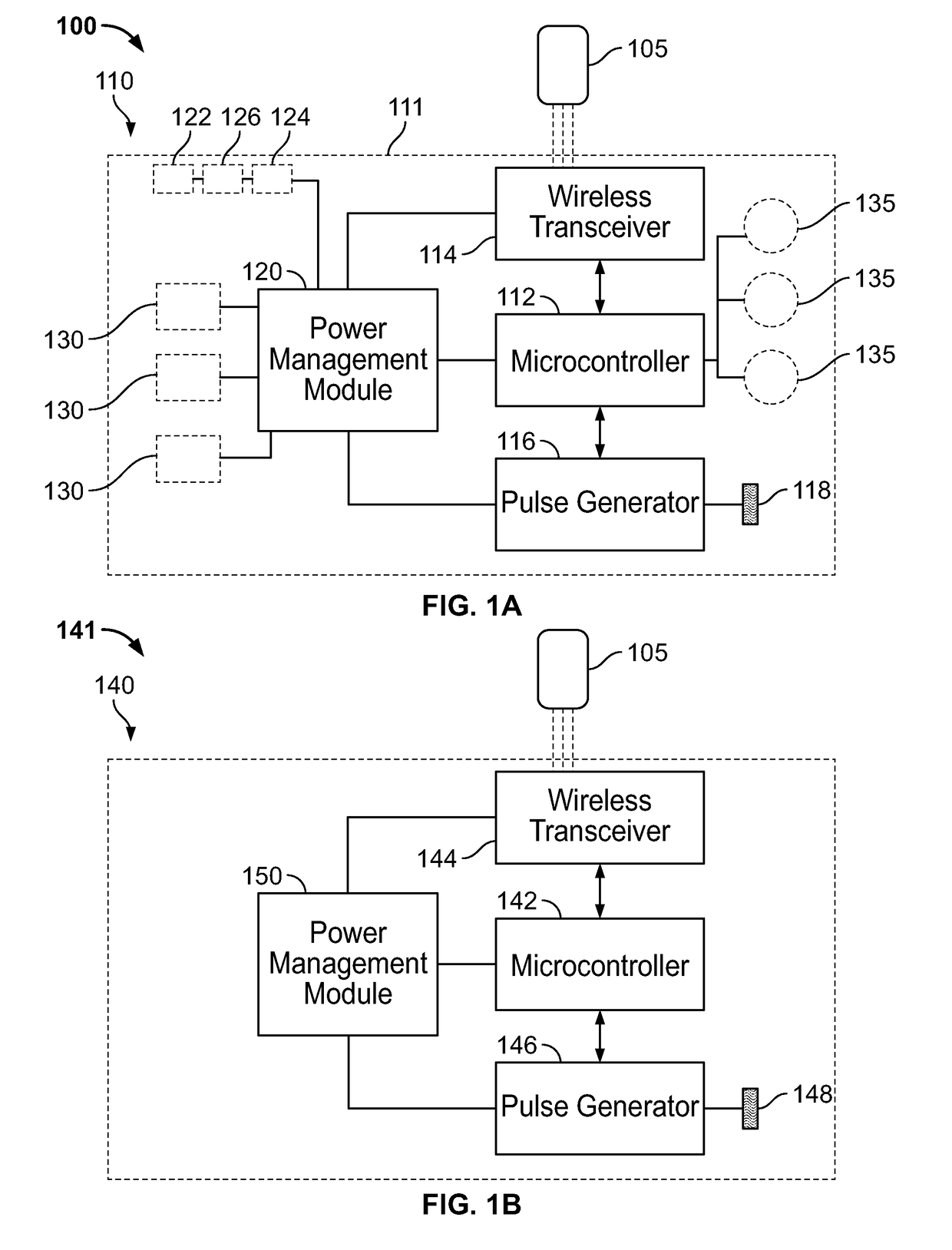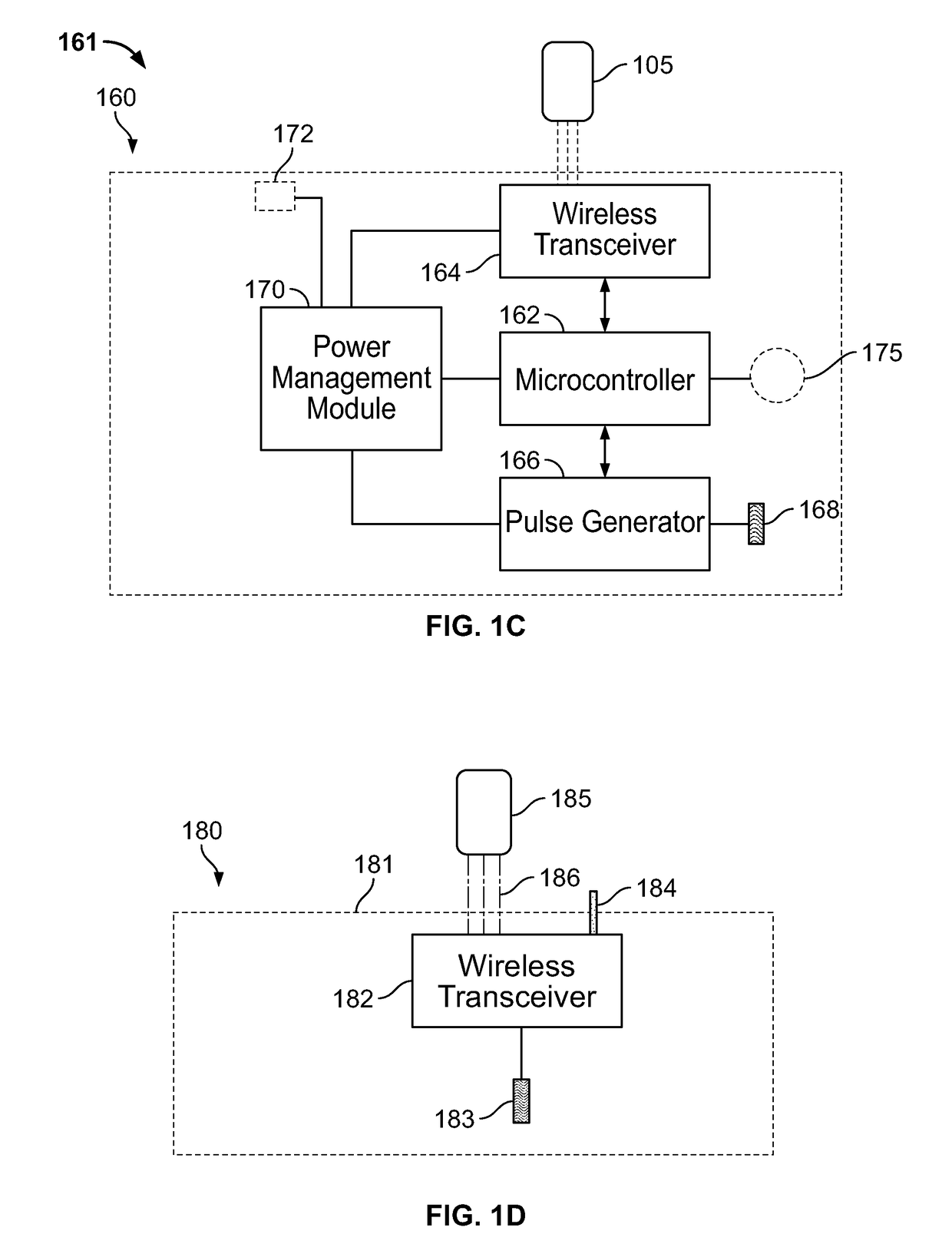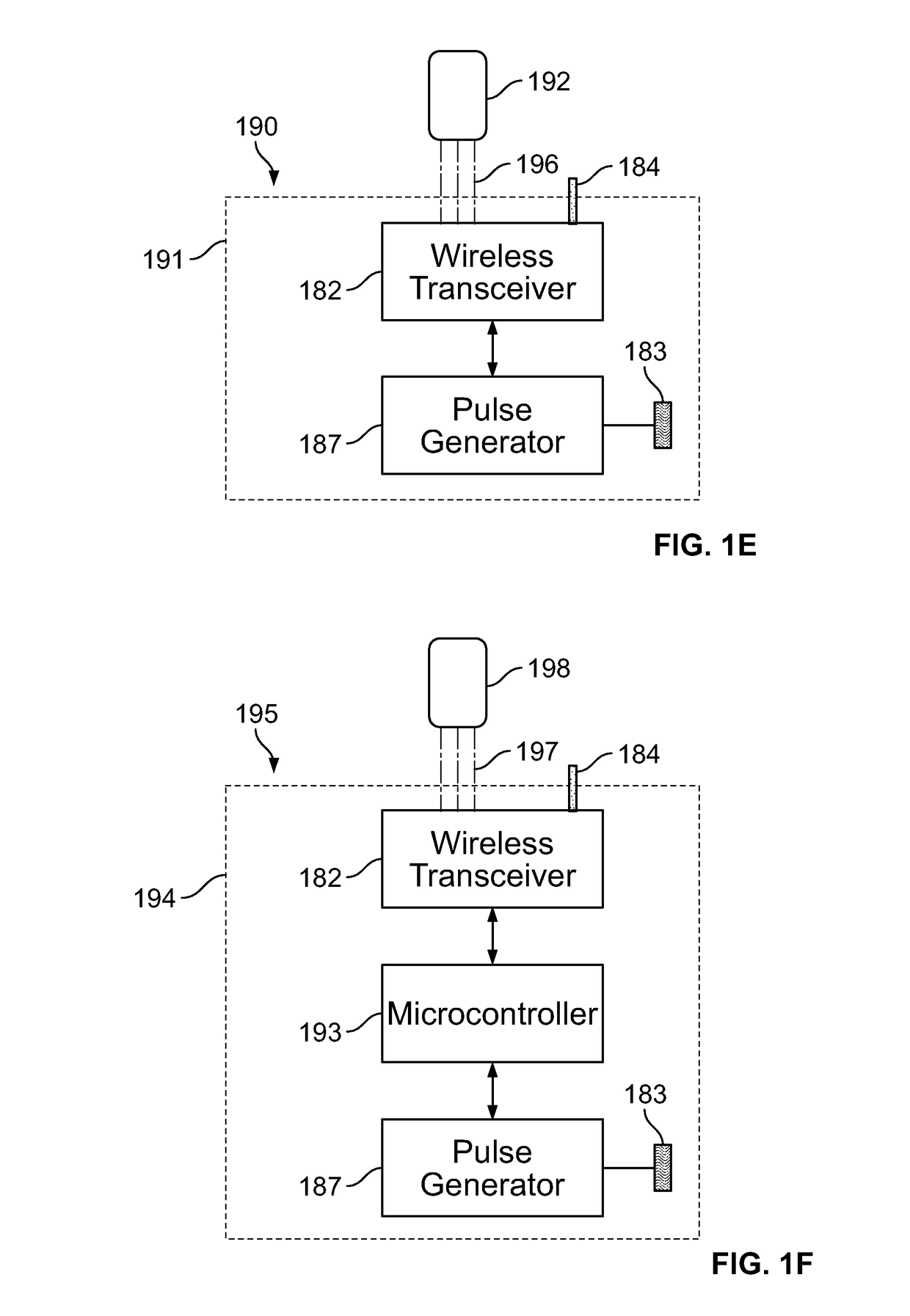Systems and methods for enabling appetite modulation and/or improving dietary compliance using percutaneous electrical neurostimulation
a percutaneous electrical neurostimulation and appetite modulation technology, applied in the field of system and method for enabling appetite modulation and/or improving dietary compliance using percutaneous electrical neurostimulation, can solve the problem of excessive weight, increased risk of several additional risks, and impaired antral phasic pressure response to a solid-liquid meal, etc., to achieve the effect of excess patient body weigh
- Summary
- Abstract
- Description
- Claims
- Application Information
AI Technical Summary
Benefits of technology
Problems solved by technology
Method used
Image
Examples
first embodiment
[0252]In a first embodiment, the PEDP device is self-implanted or self-administered by the patient. In such an embodiment, the user places a PEDP device on his skin at an appropriate site or location whereby the PEDP device includes a deployable retractable needle positioned on the bottom surface of the device, which is in contact with the user's skin. When deployed, the needle punctures the user's skin and implants an electrically conductive lumen underneath the skin. The needle is then retracted. FIG. 1G is a flowchart illustrating a plurality of steps of a method of self-implantation of the PEDP by a user, in accordance with an embodiment. At step 105g, the user places the PEDP on the skin at an appropriate site or location for stimulation. Selection or identification of the appropriate site is described in greater detail below. The user then, at step 110g, deploys a needle positioned at the bottom surface (touching the user's skin) of the PEDP, by either actuating a button on th...
second embodiment
[0253]In the present specification, referring back to FIG. 1A, the PEDP device includes one or more electrodes 118 configured as an array of micro-needles that enable a patient-friendly intradermal stimulation delivery solution that can be self-implanted and positioned by the user. FIG. 1H shows an array of micro-needles 199 mounted on a base 138. The micro-needles 199, in some embodiments, are positioned using springs for insertion into the patient's skin. The array of micro-needle electrodes 199 penetrate the skin barrier and deliver stimulation with reduced tissue damage, reduced pain, and reduced or no bleeding. In some embodiments, the depth of insertion of penetration of the micro-needle electrodes 199 ranges from 0.1 mm to 30 mm. In some embodiments, the depth of insertion or penetration of the micro-needle electrodes 199 ranges from 0.1 mm to 4 mm.
third embodiment
[0254]In a third embodiment, the PEDP device of the present specification is implanted by a physician or medical personnel. FIG. 2C is a perspective view of a percutaneous electrode insertion system 230 utilized by a physician to implant one or more percutaneous electrodes underneath the patient's skin. The system 230 comprises a housing 232 with a mounting surface 235 adapted for application to the skin of the patient, in accordance with some embodiments. The mounting surface 235 is defined by a plane and has a hollow needle 238 protruding therefrom. In various embodiments, the needle 238 is surrounded by springs that are utilized to deploy a percutaneous electrode (such as the electrode 211 of FIG. 2A), inserted through the hollow needle 238, automatically at a desired angle of insertion.
[0255]FIG. 2A shows a neuro-stimulation device 210 configured to provide percutaneous electrical stimulation therapy, in accordance with some embodiments. The device 210 includes an electrode pad ...
PUM
 Login to View More
Login to View More Abstract
Description
Claims
Application Information
 Login to View More
Login to View More - R&D
- Intellectual Property
- Life Sciences
- Materials
- Tech Scout
- Unparalleled Data Quality
- Higher Quality Content
- 60% Fewer Hallucinations
Browse by: Latest US Patents, China's latest patents, Technical Efficacy Thesaurus, Application Domain, Technology Topic, Popular Technical Reports.
© 2025 PatSnap. All rights reserved.Legal|Privacy policy|Modern Slavery Act Transparency Statement|Sitemap|About US| Contact US: help@patsnap.com



